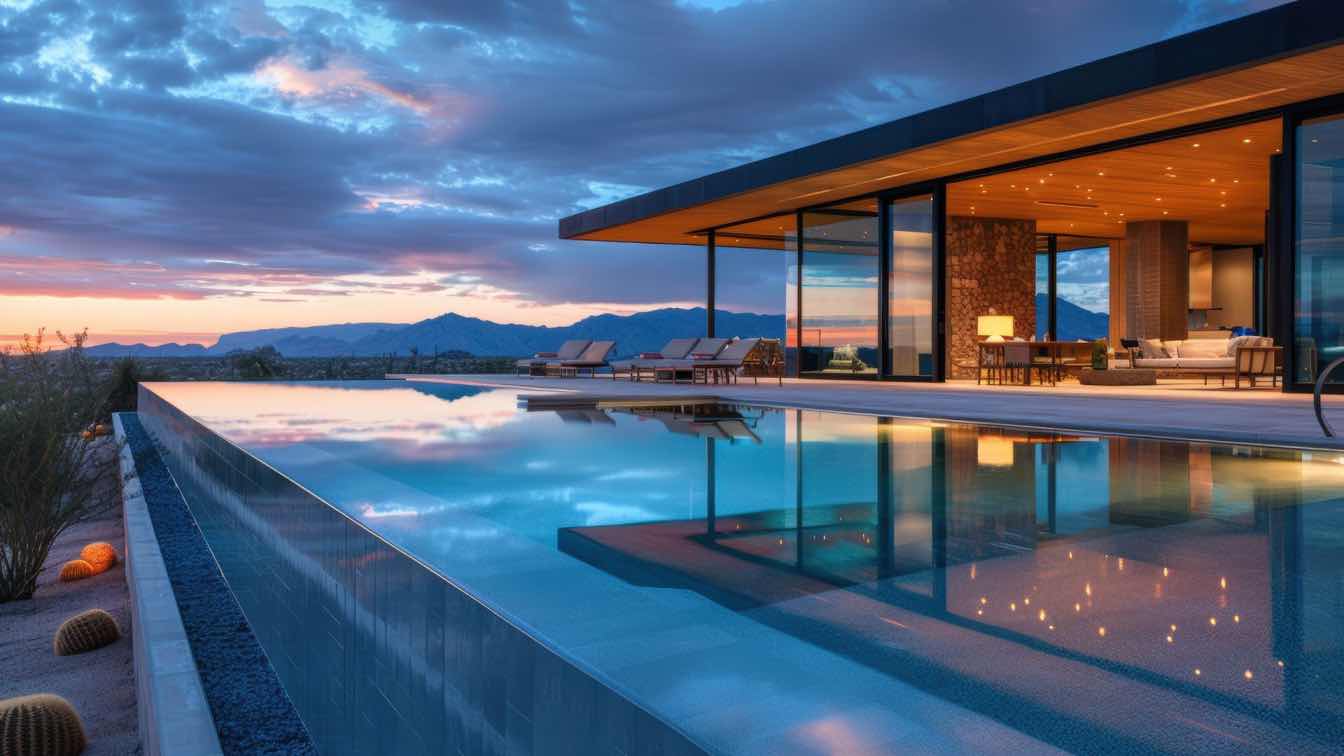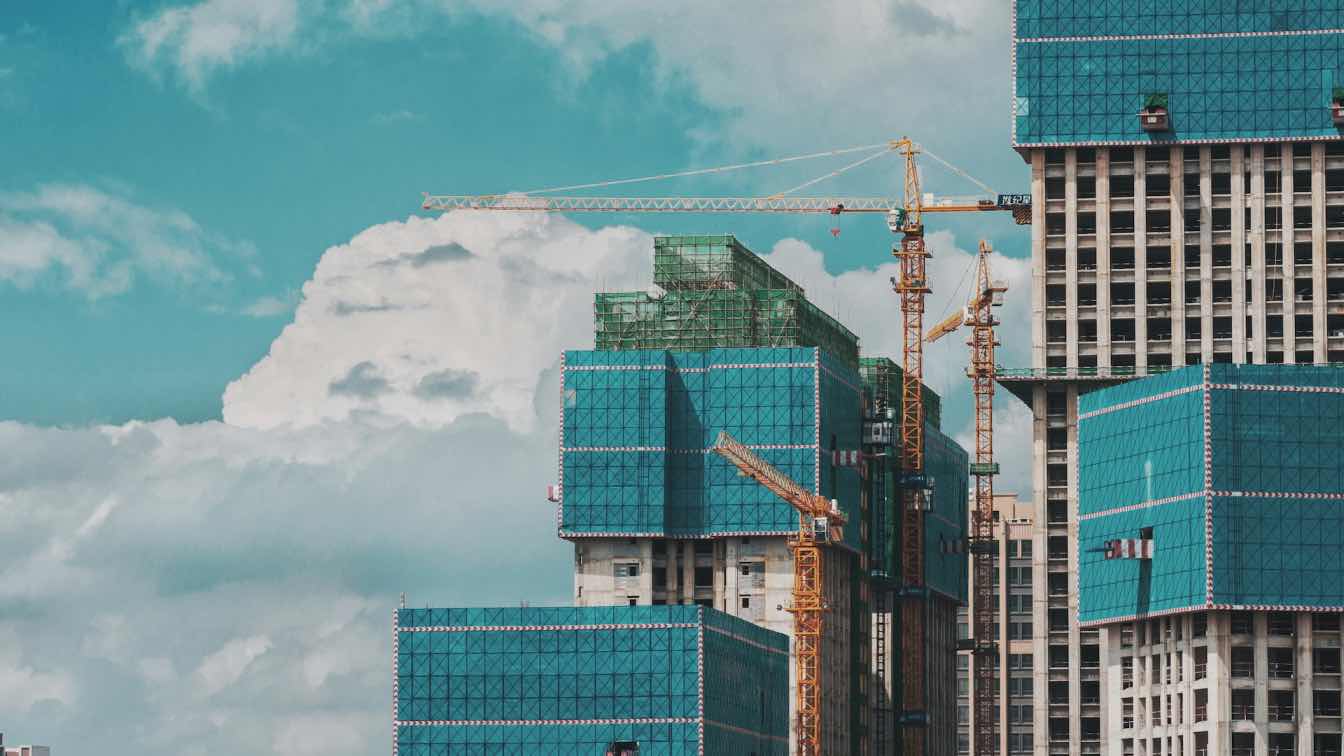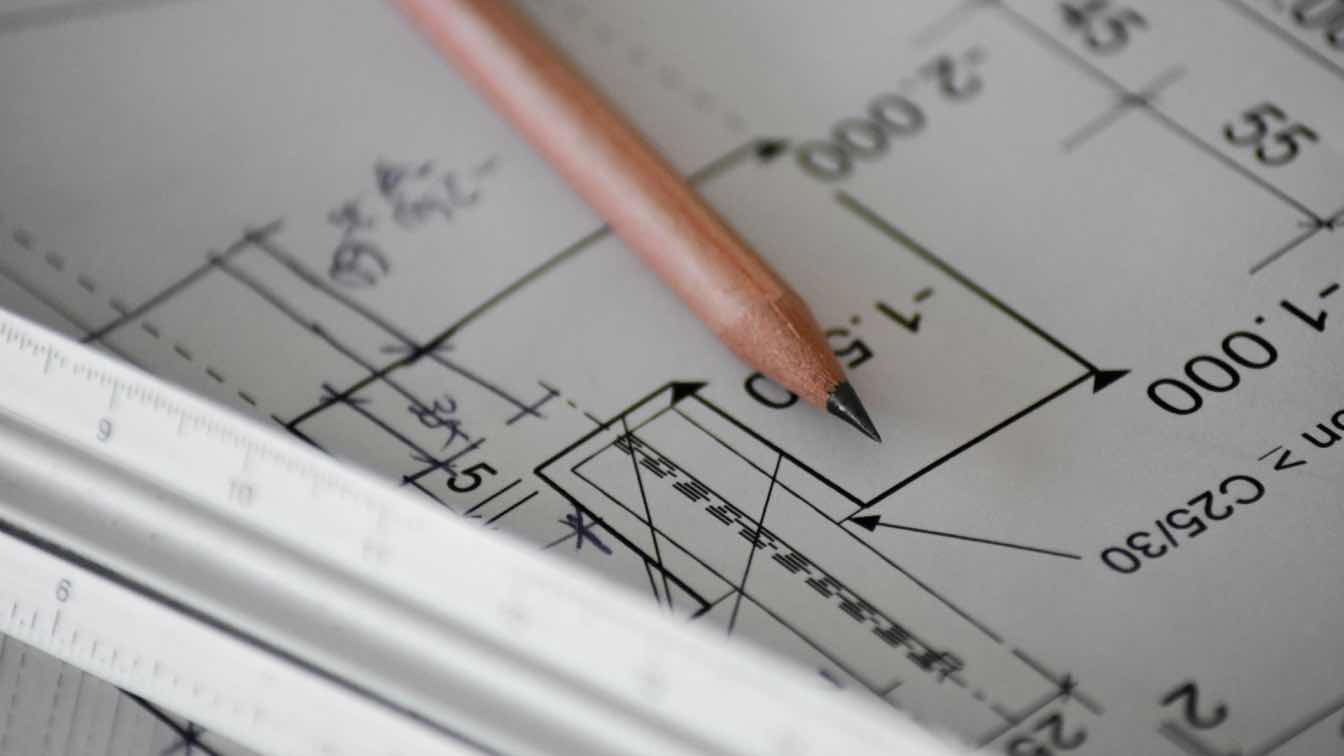Luxury villa architecture exemplifies the highest standards of design, seamlessly integrating opulence with functionality. This article delves into the defining characteristics of luxury, exploring how aspects such as location, client preferences, and budget influence the design process. Key elements, including materials, layouts, and high-end amenities, will be emphasized, alongside the architect's role in harmonizing aesthetics with practicality. Furthermore, essential challenges, such as building regulations and sustainability, that impact the development of these exquisite spaces will be addressed. Readers are invited to engage with the content to understand what distinguishes luxury villa architecture as truly exceptional.
Understanding Luxury Villa Architecture
Understanding luxury villa architecture necessitates a thorough examination of the interplay between aesthetics, functionality, and the design principles that characterize high-end living spaces.
These opulent structures often showcase a fusion of architectural styles, including Mediterranean, contemporary, and minimalist designs, all influenced by cultural factors and market trends.
The emphasis on open spaces, natural light, and premium finishes facilitates a seamless integration with the surrounding environment while highlighting the significance of privacy and wellness-focused architecture.
Furthermore, luxury villas frequently integrate smart home technology and eco-friendly design solutions, rendering them not only visually appealing but also sustainable.
Defining Luxury and its Role in Architecture
Defining luxury within the realm of architecture extends beyond mere opulence; it involves a harmonious integration of high-end finishes, superior craftsmanship, and functional design that enhances the overall living experience. Luxury is fundamentally about creating an environment that aligns with the client's lifestyle while simultaneously ensuring structural integrity and investment value.
The pursuit of architectural luxury necessitates meticulous attention to detail, including the selection of materials, the incorporation of innovative technologies, and the introduction of bespoke elements that contribute to a sense of uniqueness.
Close collaboration with clients is paramount in this process, enabling architects to understand individual preferences and aspirations thoroughly. Villa Vegas Dave used this collaborative approach in making their luxury villas in Cabo. Through this partnership, the essence of luxury is defined not merely by grandeur but by the interplay of each element, creating an inviting, functional environment.
Factors Influencing Luxury Villa Design
Numerous factors influence the design of luxury villas, with location serving as a pivotal determinant.
The geographical context not only dictates architectural features but also influences outdoor living spaces, landscaping, and privacy considerations, all of which are essential to the overall aesthetics and functionality of the villa.
Location and Surrounding Environment
The location of a luxury villa is critical in defining its architectural identity, especially in the context of coastal architecture that seeks to harmonize with the natural environment. Factors such as climate and panoramic views significantly influence the design of outdoor spaces and the overall layout.
For example, villas located in tropical regions often feature large overhanging roofs and expansive terraces to provide shade and facilitate outdoor living, whereas properties in colder climates may prioritize insulation and warmth.
Furthermore, the strategic placement of windows can frame stunning vistas, ensuring that the beauty of the landscape is seamlessly integrated into daily life.
The harmonious integration of indoor and outdoor areas not only enhances aesthetic appeal but also fosters a lifestyle that embraces the surrounding environment, ultimately reflecting the unique character shaped by the villa's geographical context.
Client Preferences and Budget
Client preferences and budget considerations are fundamental to the design process of luxury villas, influencing every aspect from bespoke features to the selection of high-end amenities. A thorough understanding of market trends enables architects to create personalized spaces that cater to the distinct needs of each client.
These preferences often mirror the lifestyles and aspirations of the individuals involved, guiding the incorporation of exclusive amenities such as private gyms, wine cellars, and infinity pools.
The interplay between these desires and financial considerations can present challenges, requiring a careful balancing act. Architects and designers must maintain open communication with clients to explore how customized solutions can be developed without compromising quality.
The result is a harmonious integration of luxury and practicality, designed to provide an exceptional living experience while adhering to budgetary constraints.
Key Elements of Luxury Villa Architecture
The key elements of luxury villa architecture include various factors such as materials and finishes, villa layout, and premium amenities that elevate the living experience.
These components are essential in defining both the aesthetic appeal and functionality of the space, ensuring a harmonious integration of comfort and luxury.
Materials and Finishes
The selection of materials and finishes in luxury villa architecture plays a crucial role in both aesthetics and sustainability, with a noticeable shift towards eco-friendly materials and superior craftsmanship. The incorporation of textural variety and bespoke features significantly enhances the distinctive character of each villa, thereby enriching the overall living experience.
Utilizing sustainable materials such as reclaimed wood, bamboo, or recycled steel not only reduces environmental impact but also adds depth and warmth to the design. Luxury finishes, including natural stone or handcrafted tiles, further enhance the elegance of the villa, achieving a harmonious balance between opulence and responsibility.
These carefully considered choices resonate with a growing demographic of homeowners who prioritize environmentally conscious living without compromising on beauty. Ultimately, the synergy between sustainability and luxury elevates the villa, transforming it into a space that not only possesses aesthetic appeal but also promotes well-being and demonstrates respect for the planet.
Layout and Floor Plans
The layout and floor plans of luxury villas are meticulously crafted to optimize open spaces and functionality, ensuring that each area serves a distinct purpose. Effective spatial planning is essential for creating an inviting atmosphere while integrating elements of contemporary interior design.
In these upscale residences, every component is thoughtfully considered to maximize both utility and aesthetic appeal. Open spaces, for example, not only foster a sense of freedom and tranquility but also encourage social interactions among family members and guests.
Innovative zoning techniques are employed to delineate specific areas within these expansive environments, ensuring that living, entertainment, and leisure zones seamlessly flow into one another. This harmonious integration of form and function enhances the overall living experience, transforming each villa into a remarkable sanctuary that reflects personal style while prioritizing comfort and sophistication.
Incorporating High-End Amenities
Incorporating luxury amenities into villa design elevates living spaces into extraordinary experiences, with features such as swimming pools, smart home technology, and outdoor living areas becoming essential components. These elements not only enhance comfort but also contribute significantly to the overall luxury lifestyle.
The appeal of expansive outdoor terraces, equipped with lounges and dining areas, allows residents to enjoy alfresco meals while taking in breathtaking views. Private gardens and landscaped grounds often serve as tranquil retreats, harmoniously blending nature with sophistication.
Smart home systems offer seamless integration of lighting, security, and climate control, providing unparalleled convenience at the touch of a button. These advancements ensure that every moment spent in a villa exemplifies comfort and elegance, creating an environment that truly embodies a life of luxury.
The Role of the Architect in Luxury Villa Design
The role of the architect in luxury villa design is multifaceted and requires close collaboration with clients to fully comprehend their vision while remaining informed about current design trends.
Architects must effectively balance aesthetics with functionality, ensuring that each project not only reflects the client's lifestyle but also emphasizes the quality of craftsmanship.
Collaborating with Clients and Other Professionals
Collaboration with clients and other professionals is imperative for architects engaged in luxury villa projects, as it promotes a synergistic approach to design and execution. Effective team coordination ensures that all project elements, from architectural features to luxury amenities, align with the client's vision.
This collaborative dynamic not only enhances creativity but also ensures that each stakeholder’s expertise is utilized effectively.
For example, when landscape architects and interior designers work closely with architects, they can create cohesive spaces that seamlessly integrate indoor and outdoor environments, thereby amplifying the overall aesthetic appeal.
Involving clients early in discussions clarifies priorities and preferences, leading to thoughtful innovations that reflect their lifestyle aspirations. Ultimately, this rich interplay between various professionals fosters a robust design process that elevates the standard of luxury, resulting in villas that are not only visually stunning but also genuinely personalized.
Balancing Aesthetics and Functionality
Balancing aesthetics and functionality is a critical aspect of luxury villa design, where architects aim to create visually appealing spaces that also fulfill practical purposes. This equilibrium is essential in luxury branding, ensuring that every design element contributes to a comprehensive living experience.
Architects encounter the challenge of integrating advanced technology and sustainable materials into their designs without compromising the overall elegance. Clients often possess specific visions that prioritize grandeur, which can occasionally conflict with the requirements for practical layouts and energy efficiency.
Consequently, achieving this balance transcends merely fulfilling design briefs; it involves shaping an environment that simultaneously promotes tranquility and functionality. This intricate interplay significantly affects client satisfaction, as a well-executed balance between beauty and usability can enhance a luxury villa’s appeal, distinguishing it in a competitive market.
Challenges and Considerations in Luxury Villa Design
Navigating the complexities of luxury villa design requires a comprehensive understanding of building codes, zoning regulations, and sustainability practices that influence both the design and construction processes.
Architects must also evaluate the environmental impact of their decisions, ensuring that their choices are aligned with contemporary construction techniques.
Meeting Building Codes and Regulations
Meeting building codes and regulations is a critical aspect of luxury villa design, ensuring that all architectural features and materials adhere to legal standards. This compliance not only protects the investment value of the property but also ensures the safety and functionality of the residence.
Adhering to these standards is essential for safeguarding the inhabitants and preserving the structural integrity of these opulent homes. Architectural firms play a pivotal role in navigating the complexities of these regulations, meticulously interpreting the requirements to harmoniously integrate aesthetics with compliance.
They ensure that the villa embodies modern luxury while aligning seamlessly with local zoning laws, thereby mitigating potential legal issues.
By collaborating with skilled architects, homeowners can achieve a remarkable design that remains within legal boundaries, creating an exceptional space that genuinely reflects their unique vision.
Sustainability and Environmental Impact
Sustainability and environmental impact have become critical considerations in the design of luxury villas, prompting the adoption of eco-friendly design practices and materials. Architects are increasingly tasked with creating spaces that not only minimize environmental harm but also offer seasonal adaptations for enhanced comfort and efficiency.
Incorporating renewable resources such as bamboo and reclaimed wood enhances the aesthetic appeal of these villas while significantly reducing the carbon footprint associated with conventional construction materials.
Designers are now focusing on integrating advanced technologies, including energy-efficient HVAC systems and solar panels, which promote self-sufficiency and reduce reliance on non-renewable energy sources.
These sustainable choices not only attract environmentally conscious buyers but also establish a standard for luxury living that harmonizes with nature, demonstrating that opulence and responsibility can coexist seamlessly in modern architecture.
Frequently Asked Questions
How is luxury villa architecture designed?
Luxury villa architecture is designed by professional architects and designers who have experience in creating high-end residential properties. They use advanced 3D modeling software and incorporate the client's preferences to create a custom design.
What are the key elements of luxury villa architecture?
The key elements of luxury villa architecture include open and spacious layouts, high ceilings, expansive windows, grand entrances, and use of high-quality materials such as marble, stone, and wood. These elements create a sense of luxury and sophistication in the design.
What is the design process for luxury villa architecture?
The design process for luxury villa architecture typically starts with a consultation with the client to understand their vision and requirements. Then, the architects create initial sketches and 3D models to refine the design. The final design is then presented to the client for approval before construction begins.
How are luxury villas able to blend in with their surroundings?
Luxury villas are able to blend in with their surroundings through careful consideration of the architectural style and materials used. For example, a villa located in a tropical environment may incorporate palm frond roofs and natural stone to seamlessly blend in with the surroundings.
What sustainability measures are often incorporated in luxury villa architecture?
Many luxury villas incorporate sustainability measures such as solar panels, energy-efficient materials, and rainwater harvesting systems. These not only reduce the environmental impact but also add to the energy efficiency and long-term cost savings of the property.
How long does it take to design a luxury villa?
The timeline for designing a luxury villa can vary depending on the complexity of the project and the availability of the client. However, on average, it can take anywhere from 6 months to a year to design a luxury villa. This includes the initial consultations, design development, and final approval from the client.





